Orthodontic Treatment as Restorative Dentistry

Did you know that getting your teeth straightened can be a form of restorative dentistry? This is because restorative dentistry seeks to restore or bring your smile to a more perfect state. Crooked teeth can become straight, which in turn starts to relieve the burdens of tooth decay, gum disease, bad breath and other oral health problems. If you want to restore your smile once more, see what our 4 different orthodontic options can do for you!
Why Is Your Smile Important?
Some patients don’t realize just how important a smile really is. Studies show that your smile is one of the first things another person will notice about you. Is that smile showing that you are healthy and confident? Or do you hide your smile because of crooked teeth, discoloration or other aspects you don’t like? When a smile looks good, studies show that people often feel more confident and they exude that confidence much easier. A better smile can lead a person to be more social and confident to pursue successful endeavors.
It’s not only what a smile does for a person themself that’s important. How your smile looks to others also will determine a lot about how successful you are. The makes of the orthodontic appliance Invisalign conducted a study about smiles, and what they found was quite amazing:
- 1/3rd of people notice a person’s smile before any other feature.
- Those who have a straighter, more beautiful smile are 45% more likely to get a job over a competitor with a crooked or discolored smile.
- Your smile can send messages about how healthy you are and how happy you seem. When that smile is straighter and more beautiful, others will see you as 21% more likely to be healthier and 47% happier.
- 73% of people are more likely to trust you at first glance if you have a better smile.
- You’re 58% more likely to be perceived as wealthy and 57% more likely to get a date if you have a great smile.

What Is Restorative Dentistry?
Your teeth will determine most of how good your oral health. When you eat, sugars in the food you eat mix with mouth bacteria. That creates plaque, or that sticky, acidic substance that coats your teeth. Over time, if proper oral hygiene habits aren’t observed, the teeth will change colors and decay. This happens much easier to the teeth if they are crooked. That’s because it’s harder to clean between the teeth if there is no way to get floss through crooked teeth.
Restorative dentistry seeks to restore smiles that are crooked or damaged through decay or gum disease (a disease to the gums that happens just like tooth decay). This form of dentistry consists of dental services such as teeth whitening, same-day crowns, root canal therapy and tooth-colored fillings. There are many dental patients that will get dental veneers—also known as “porcelain veneers”—to restore their smile. This is a dental service where the top layer of your teeth is taken off and replaced with a perfect, white tooth shell. However, once that part of your natural tooth is taken off, you can’t get that natural part back. Porcelain veneers do make your smile look beautiful, but they don’t change your crooked teeth or oral health issues underneath.
Fixing the Problem with Orthodontic Treatment
Fixing the problem permanently is a great solution to getting a beautiful smile and reducing your problems with tooth decay, gum disease, bad breath and more. Straighter smiles are ones that are easier to clean and ones that look attractive and healthy. Plus, once you straighten your smile with orthodontic treatment, it can stay that way for life. Orthodontics is different than dentistry, but is absolutely important to your oral health.
Dentists will fix problems with tooth decay and gum disease. Orthodontic treatment and restorative dentistry through those braces can help prevent problems in the first place. Plus, orthodontic braces are able to correct bite and alignment issues that are caused by misaligned bites and jaws. Those issues can cause speech and development problems without intervention. Without orthodontic treatment, other restorative dentistry methods can only do so much.
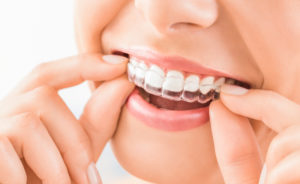
Restorative Dentistry for You
Our easiest method of restorative dentistry for teens and adults is through Invisalign treatment. This option works just as well as our lingual braces, ceramic braces and traditional metal braces. However, with Invisalign, the focus is on aesthetics as well as straightening. We want you to have a beautiful smile as you straighten, and Invisalign is a great way to achieve that.
Invisalign is a orthodontic treatment that is designed to be virtually unnoticeable on your teeth. Patients have their teeth digitally scanned in-office and a treatment plan is made for them, mapping out how orthodontic treatment will transform their smile in 18 months or less. Often, patients can straighten their smile in 1/3rd of that time, depending on the condition of the teeth, bite and alignment. Less office visits are typically needed for this type of restorative dentistry.
You simply wear your aligners for 20-22 hours each day (and overnight), and by switching out the aligners each week, your teeth shift into a straight smile over time. The benefit of this restorative dentistry option is that you are actually fixing the root cause of oral health problems. Crooked teeth cause tooth decay and gum disease to worsen, but you avoid that with a straight smile. With other restorative dentistry options (such as teeth whitening or veneers), you will still have the crooked teeth (although masked), and possibly the dental problems. Avoid all that while still getting a beautiful smile with Invisalign. If you want to learn more about this restorative dentistry option for adults and teens, contact Belmar Orthodontics today at (303) 225-9016!
Dental Services You Need During Braces
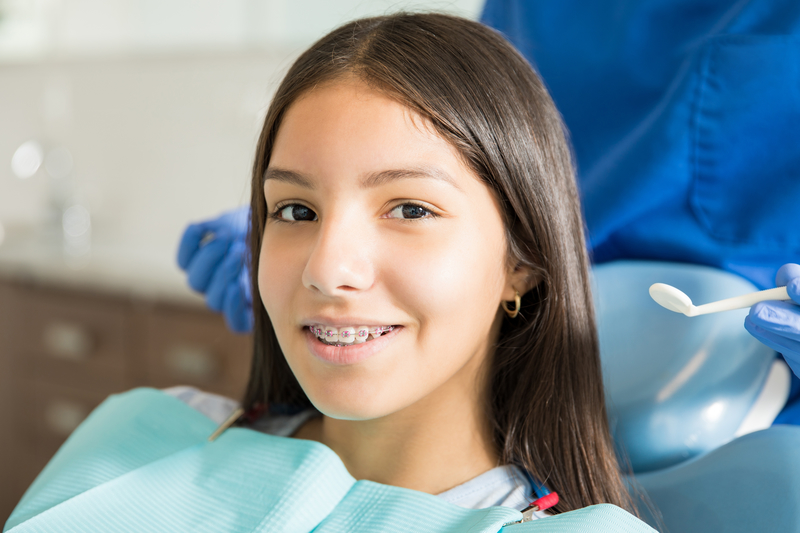
Getting braces through an orthodontist does not mean you should stop seeing a dentist for dental services. In fact, you may even need to get dental services more often with braces. This is because brackets and wires inevitably raise your risk for getting food and plaque stuck in your teeth. Those substances can then lead to quicker tooth decay, gum problems and tooth erosion. Find out what you can expect from your orthodontic visits and why you should keep scheduling in dental services during your treatment.
How Do Braces Change Your Teeth?
Not everyone will get braces during their lifetime. However, for those that do, they can change a smile in incredible ways. You may see children wearing braces from time to time. This is just so they can get a great smile, but that is part of it. Children should see the orthodontist around age 7 or 8 to determine if bite or alignment issues are present. If so, a child could grow up with speech impediments, problems with tooth decay and gum disease, and difficulty chewing, eating and biting. With interceptive orthodontics—or child orthodontics—we can correct those problems so a child develops properly.
With adults and teens, straightening treatment generally starts around age 11 or 12 and older. This is when most (if not all) of the adult teeth have come into the mouth. However, it’s common for the adult teeth to come in crooked, which can make people self-conscious about their smiles. When patients decide to get braces to straighten their teeth, studies show that confidence grows and people show their smiles more. That confidence can lead to more success in the future, motivation to do more and be more, and better oral health.
Straightening the teeth makes the teeth easier to clean. This is because crooked teeth can create areas in the mouth where the teeth are incredibly hard to clean. If you can’t brush nooks and crannies well or if you can’t pass floss through the teeth, those areas are likely to decay. Teeth that are crooked or at different angles also have different amounts of pressure placed on them, which can cause the teeth to crack or break under pressure. That is why straightening the teeth can help prevent not only dental emergencies, but also problems like tooth decay and gum disease.

Changes You Want to Avoid
With your dental health, you always want to invest in dental services like dental cleanings, comprehensive exams and your own at-home cleaning. If not, you can start to develop problems with cavities and gum disease. Both of these conditions (as well as bad breath, oral sores and more) stem from poor oral hygiene. When you eat, bacteria in the mouth mix with sugars in your food to create a sticky film called plaque. That film is acidic and it sticks to your teeth instead of being swallowed. The acid erodes the layers of your teeth, decaying them to create cavities. This is how they form, and they can happen much easier with braces.
Three types of braces you can choose (traditional, lingual, ceramic) will require brackets and wires attached to your teeth. The brackets are bonded to the center of your teeth, with a wire that runs through them. Your brackets are areas where plaque and food can easily get stuck. If they become stuck or particles build up around your brackets, this can create areas of decay rather quickly. Many people also don’t floss like they should with braces because it takes just a bit longer. However, when food sticks around and you skip flossing, you are leaving about 40% of your tooth surfaces open to decay. That means, when you get your braces off, you’ll be left with areas of tooth erosion (or craters) and cavities.
You also want to avoid foods with dyes in them, including drinks. When you drink or eat something with dyes (like blueberries, strawberries, blackberries and drinks died those colors), then your tooth color can change over time. This could mean that you have small squares on all of your teeth at the end of treatment that are a different color than the rest of your teeth. Soda, juices and carbonated drinks can all do this as well, except that they will also wear away parts of your teeth.
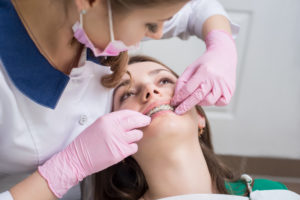
Continue Dental Services During Braces
All of those changes to your teeth can be avoided if you keep up on your personal hygiene at home and dental services in-office. This means, you should:
- Brush your teeth every single day, after every single meal, for two minutes each time you brush. Practice brushing at 45-degree angles to dislodge food from brackets and cover all the tooth surfaces. Use a proxabrush to dislodge stuck food even easier.
- Floss each day, at least 1-2 times. Use a floss threader or threadable floss to make this easy for you.
- Use a waterpik tool if you tend to get food stuck in specific places.
- Keep up on your braces adjustments and your orthodontic appointments.
- For dental services, make sure you visit the dentist at least twice a year for comprehensive exams and dental cleanings.
We want to focus on that last one. Dental cleanings and comprehensive exams are so important for the health of your mouth. With dental cleanings, the hygienists can do thorough cleanings on your teeth and brackets and spot the signs of erosion, decay and color changes. Those professionals can spot the signs of decay and gum issues. If needed, we can work with them to remove certain brackets where dental work is needed. Orthodontists and dentists are not the same even though they have had the same schooling. Make sure you are visiting both during your time with braces. If you want to avoid problems with cleaning brackets and wires, ask us about our Invisalign treatment option. You can do this by calling Belmar Orthodontics at (303) 225-9016!
Fun Facts About Orthodontics
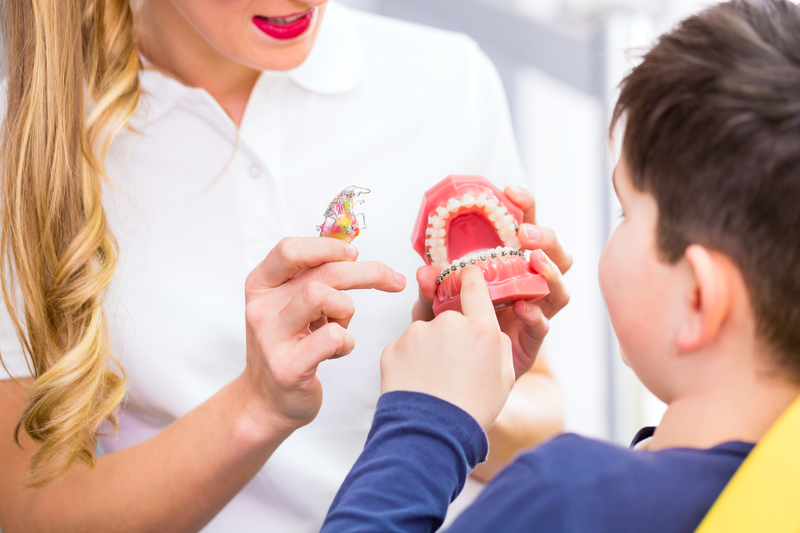
Did you know that an orthodontist is different than a dentist? Orthodontics is a dental specialty all its own, that has different goals and processes than what dentists do. There are many ways to fix the teeth and many methods that have been tried for many centuries. Find out the amazing history of orthodontics and some facts you may not know!
History of Orthodontics
People have been straightening their teeth since the time of the Ancient Egyptians, as can be seen from mummies from this era. Even the Romans and Etruscans used crude orthodontic straightening methods to get a better smile. Many philosophers hypothesized better ways to straighten the teeth. A Roman writer Celsus (1 A.D.) thought the teeth could be pushed into place. Pliny—around the same time—thought the teeth could be filed to be the ideal shape and size.
It wasn’t until 1728 that Pierre Fauchard—or the “Father of Dentistry”—made great strides with orthodontics. He first practiced crudely removing the teeth, replacing them straight, and tying them to other teeth so they could heal straighter. From his influence and others after him, modern orthodontics came to be. Matthaeus Gottfried Purmann developed dental impressions in the 17th century. In the early U.S. years, barbers and medical professionals experimented and performing small orthodontic treatments. This was until the first dental school was established in 1828.
Afterwards, J.S. Gunnell invented a form of headgear that was successful in straightening the teeth. Dental students and professionals figured out how to make a metal appliance to straighten individual teeth, which led to the now-used bracket and wire design in modern orthodontics. Before 1970, orthodontists wrapped wires around each tooth and required that headgear to straighten. This practice involved lots of metal in the mouth, which is why a better form (that we use today) was invented in the following years. Now, in the last 20 years lingual braces (braces behind the teeth) and Invisalign (transparent aligners) were invented to allow patients a hidden apparatus with orthodontics.
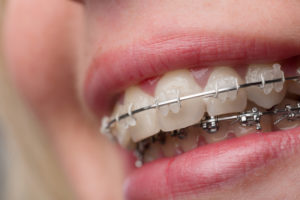
What Do Orthodontists Do?
Did you know that orthodontists are dentists? Every orthodontist is a dentist because they have completed dental school and then some. However, not all dentists are orthodontists. The standard requirements for dentists are to complete 4 years of undergraduate schooling and then 4 years at a dental school. They will have to pass exams and become certified to do dental work. Orthodontists do all of those 8 years, plus they complete 2-3 more years of orthodontics, training in bite and alignment correction and surgical orthodontics. All throughout their career, both dentists and orthodontists must do continuing education courses as well as pass tests to continue working.
An orthodontist will not fix your cavity even though they may spot the signs of tooth decay. Often, an orthodontist works closely with a dentist, as both professionals work on your mouth. What one professional doesn’t do, the other will do. Dentists do everything relating to tooth decay (cavities), gum disease and other oral health diseases as well as remedying dental emergencies. An orthodontist performs services that a dentist doesn’t do such as:
- Bite and alignment correction in children and adults (child orthodontics and adult orthodontics)
- Surgical orthodontics, which is surgery to help remedy a misaligned jaw or bite.
- Braces design, fitting, adjusting and complete process with lingual braces, ceramic (clear) braces, traditional metal, and Invisalign treatment.
- Training in placing temporary anchorage devices, which are tiny screws in the mouth that push, pull, lift or intrude teeth that are being straightened.
- Designing and creating retainer devices to keep bite, alignment and teeth in proper position.
Facts About Braces
- An orthodontist must complete 4 years of dental school, plus 3700 hours or specialized training in orthodontics to get their degree.
- There are more than 19,000 orthodontist members under the American Association of Orthodontics in the U.S., Canada and abroad.
- 1 in 4 people with braces are adults.
- Children make up another 1/4th of people wearing braces to correct bite and alignment.
- Because of modern technology, all four of your dental options (lingual, metal, ceramic and Invisalign) can straighten your teeth in about the same amount of time.
- It is possible to only get braces in either your upper or lower jaw if the other jaw is straight.
- The jaws stop growing as a child ages. That growth stops towards the end of the teenage years around 17 or 18. Straightening the teeth is effective for people after this age, but it may take longer than it would for children.
- Patients generally see their orthodontist every 6-10 weeks for braces adjustments. Patients with severe bite and alignment issues may need to come in more often.
- Orthodontists often usually have “DDS” or “DMD” after their names. This stands for “Doctor of Dental Surgery” and “Doctor of Dental Medicine”. Both are considered equal degrees, but the degree given depends on the dental school attended before orthodontic training.
- Materials used in metal braces are so light that they won’t set off metal detectors in airports.
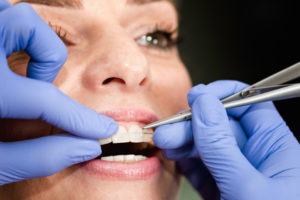
How Do Orthodontics Help People?
If you’ve never been to an orthodontist, you may wonder why you need one. Not everyone may need orthodontics to correct bite and alignment issues, but everyone should see an orthodontist at some point. The American Association of Orthodontics recommends that every person have an orthodontic visit between ages 7 and 8. This is prime time to detect bite and alignment issues that would lead to crooked teeth, speech impediments, oral hygiene diseases, and problems chewing, biting and functioning normally.
When issues are found, they can quickly be corrected so children can grow and develop normally. If a teen or adult wants to straighten their teeth to boost their confidence and success, they can receive braces starting around age 11. For specific questions about our orthodontic services, call Belmar Orthodontics today at (303 225-9016!
Choosing to Have Adult Braces

If you are an adult with crooked teeth, you may think that you already missed your opportunity to get braces. However, adult braces are very popular. In fact, at least 1/4th of all braces wearers are adults. You simply might not see braces on many of your peers because adults have a couple orthodontic options that stay hidden in the mouth. Find out if you should choose to have adult braces, what the benefits are, and what options you have to straighten your teeth discreetly!
Do Adults Wear Braces?
The American Association of Orthodontics recommends that every person have an orthodontic evaluation between the ages of 7 and 8. This is prime time for orthodontists to correct bite and alignment issues that can become severe as a child ages. However, not everyone knows that they need to see an orthodontist, nor do many people have the means to receive orthodontic care due to cost. That opportunity may come when you are an adult. Have you missed the mark if you’re already an adult instead of a child? Certainly not!
Orthodontic treatment is a bit harder when you are an adult, but it is not too tricky for us to manage. Orthodontists recommend that children and teens get braces for bite, alignment and issues with crooked tooth when young. This is because the jaws are still growing and the teeth and jaws are more moldable until a teen grows older. As an adult, the jaws have hardened into place, so shifting the teeth and jaws is much more difficult.
However, modern technology definitely allows adults to change their smiles as they please. In fact, 1/4th of all people wearing braces are adults! Adult braces are becoming more and more popular as jobs become more competitive. Adult braces can really give people the edge they need to succeed because it creates a more beautiful, straight smile.
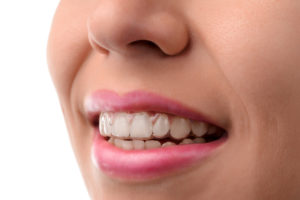
Benefits of Choosing Adult Braces
There is more than just the aesthetics of receiving adult braces. Getting braces can not only improve your appearance, but they can radically change your oral health. Did you know that your risk for tooth decay and gum disease is significantly less with braces? This is because the teeth become straighter, getting rid of all the nooks and crannies plaque and bacteria cluster in with crooked teeth. The teeth are easier to clean, and your smile looks much better, so you’ll actually want to clean your teeth more often.
Many people do love what adult braces can offer their smile. The main advantage is confidence. Many studies have been conducted on the confidence that a smile can bring not only to a person but to others. When you feel self-conscious of how your teeth look, you’re less likely to show your smile to others. This can happen even with children, who may become more introverted because they are self-conscious. However, when smiles are healthy and straight, people tend to show them off more. The more smiling, the more confidence a person feels and the more likely they are to be perceived as such.
The company that invented Invisalign actually conducted studies about this very thing. They found that people who had better, straighter smiles appeared much more confident than those with crooked smiles. The patients themselves felt 60% happier, more attractive and more successful, and others saw them as such. Those with straight smiles were more likely to land a job over their competition and were more likely to be successful with home, school and social life. They were also perceived as 72% more trustworthy just based on first impressions. The benefits of adult braces are endless and all benefit you!
What Options Do You Have?
Adults have all the orthodontic options available to them for straightening:
- Traditional Metal Braces: Consists of a metal bracket and wire design.
- Ceramic Braces: These are very similar to traditional braces, except they are made from white, ceramic material that helps hide them in the mouth. Ceramic material helps prevent tooth demineralization.
- Lingual Adult Braces: These are metal braces that fit behind the teeth and are bonded to the backs of your teeth. Molds are made of the teeth so that the metal can be custom-made to cover your teeth. This option is a preferred one among adults seeking adult braces.
- Invisalign: This orthodontic treatment consists of transparent aligners that are customized to your mouth with a digital machine. You will get a new aligner each week, which you place in your mouth like a retainer. They stay hidden in your mouth, can be removed for regular oral hygiene cleaning and eating, and you get a better smile!
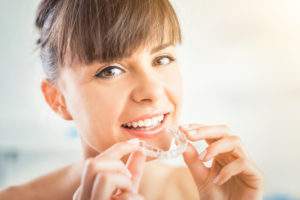
What Can You Expect?
Many people aren’t quite sure what to expect from their first orthodontic visit, as orthodontists don’t do the same work that dentists do. Dr. Hardy will meet with you for an oral evaluation and orthodontics consultation. He will examine your bite and alignment and will determine your candidacy for specific procedures if they are needed. Oral health issues—such as periodontal (gum) disease—will have to be resolved before the teeth can be straightened.
If bite and alignment issues are not present, you can move forward with regular straightening treatment. Dr. Hardy will take impressions of your teeth and will plan out a trajectory of your orthodontic plan. This is where you can know how long you will wear braces and how your mouth should look by the end of your treatment. You will also choose which orthodontic option you would like (traditional, lingual, ceramic or Invisalign) so that appliances can be made to fit your mouth.
After your consultation, your next appointment will be your braces fitting. After that, it’s easy to care for your mouth between quick adjustment appointments. Always brush and floss your teeth, and do these two habits more often than you used to. If you are wanting adult braces, consider Invisalign or lingual braces, as these options keep your orthodontics concealed if you need them to be. For all your questions about adult braces, call Belmar Orthodontics today at (303) 225-9016!
Preventing Cavities During Braces
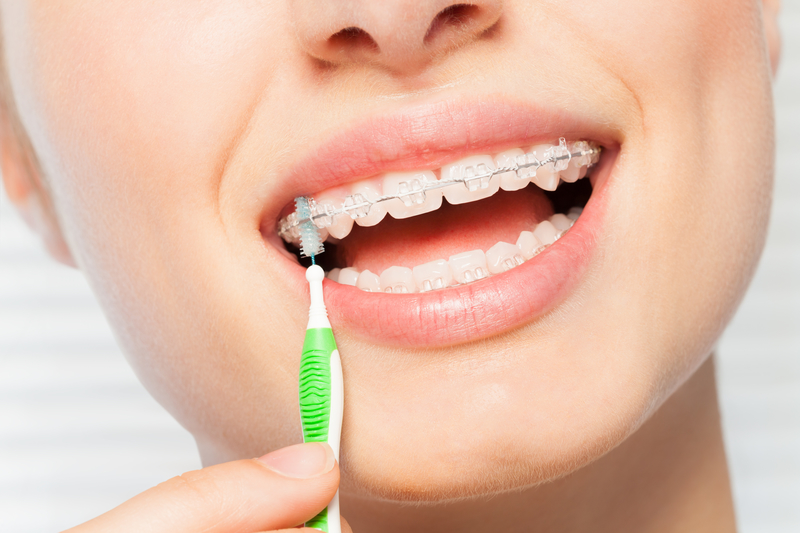
Braces is an exciting time for getting that straight smile you’ve always wanted. The not-so-exciting part about braces though, is that they give you a greater risk for cavities. Because there are appliances attached to your teeth, they can become havens for bacteria and plaque buildup. Proper oral hygiene, avoiding certain foods can help you prevent cavities during your time with braces!
Your First Orthodontic Appointment
Finding cavities before you get braces is key to ensuring that you have a healthy smile before getting brackets and wires on your teeth. With braces, you will meet often with your orthodontist to have your braces adjusted. However, you still need to go to your dental appointments to make sure you don’t have cavities during braces.
Traditional metal braces, ceramic braces and lingual braces all have brackets and wires that go on your teeth. Before you get fitted for these braces, you will have dental x-rays taken by the dentist to detect cavities. It’s very important to get your exam so tooth decay is detected. Otherwise, you could end up with large cavities during braces. If cavities are found, they must be fixed before we put your braces on.
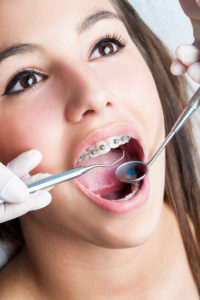
Oral Hygiene Is a Must
The status of your smile and your oral health will depend on what you do once you get your braces. The American Dental Association recommends brushing your teeth at least twice a day and flossing 1-2 times. That recommendation is for patients who don’t have braces. When you have braces, you have to be extra meticulous with oral hygiene practices and you will have to do them more than you used to. That means, brushing after every single meal if you can.
To avoid cavities during braces:
- Brush your teeth after every meal. Use a soft-bristled toothbrush with fluoride toothpaste, and brush for 2 minutes every time, making sure to go in all different directions to dislodge food.
- Floss your teeth. This is a habit many people skip with braces because it takes a bit more time. However, it’s time well spent. Floss at least twice a day, using threadable floss. This kind of floss allows you to thread it through the spaces between your teeth, pulling it through so you can floss like normal. It makes flossing a breeze and helps prevent cavities during braces.
- Use orthodontic cleaning tools. A waterpik is a great water-spraying tool that can help you dislodge stuck food. A braces brush (that looks like a Christmas tree brush) can get food out of brackets.
- Watch what you eat! More sugar means more cavities during braces. Limit how much sugar you eat. You want to avoid sticky, sugary foods such as taffy, Starbursts, dried fruit, gummies, fruit snacks, caramels, and anything similar.
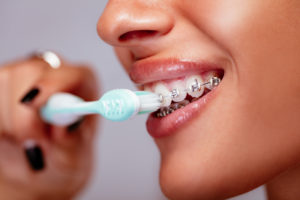
Developing Cavities During Braces
Sometimes, tooth enamel is simply weak and tooth decay happens, despite all your hard effort to avoid cavities. When you eat, sugars in your food mixes with mouth bacteria to create plaque. That plaque sticks to your teeth and slowly eats it away, creating decay. You only need plaque stuck in the right place to develop cavities during braces. When you have hidden tooth decay, you may start to feel symptoms such as a toothache, tooth sensitivity or pains with hot and cold. When you see these signs, get dental x-rays taken to see if you have cavities during braces.
If there is a cavity, you actually can have it fixed even if you have braces. It all depends on where the decay is. In most cases, cavities during braces can be fixed because many will lie on surfaces not covered with brackets or wires. You would have the decay drilled out and filled as you normally would. However, if you have a band on your teeth or brackets and wires right where decay is, we would have to remove the bracket or wire while you get it fixed at the dental office. We would then have you come back to our office to get your dental appliance reattached. Patients can sometimes develop such severe cavities during braces that they will need root canals. However, if you are taking care of your teeth, you won’t ever have to worry about that.
Best Option to Avoid Cavities
If you are worried about cavities during braces or have seen a family member get cavities during braces, then getting braces might make you nervous. However, no matter what braces option you choose, the benefits of a straight, beautiful smile can last a lifetime. It’s definitely worth it to get braces; you will just have to be careful to take care of them. If cavities during braces are a concern, consider the benefits of using Invisalign aligners. This is one of our most popular orthodontic options for teens and adults because it is a hidden option for straightening your teeth.
Invisalign transparent aligners are a series of custom-made aligners (like retainers) that fit incredibly snug to your teeth. We take digital calculations of your mouth, where we then design transparent aligners around the shape of your teeth and where we want them to be 18-24 months from that time. Each week, you will switch to a new aligner, which will slowly put pressure on different areas of your mouth, shaping the teeth into a straight line. The aligners are clear and designed to be virtually unnoticeable on your teeth.
When it comes to cavities during braces, you are the one that decides if you will get them with this orthodontic option. That’s because that are completely removable for eating, drinking, flossing and brushing your teeth. It takes less time to brush and floss because of this and there are no appliances on your teeth. This can reduce your risk for cavities during braces, especially if you already know that you have weak tooth enamel. For any questions about cavities during braces, call Belmar Orthodontics at (303) 225-9016!
Be Vigilant with Your Child’s Oral Health
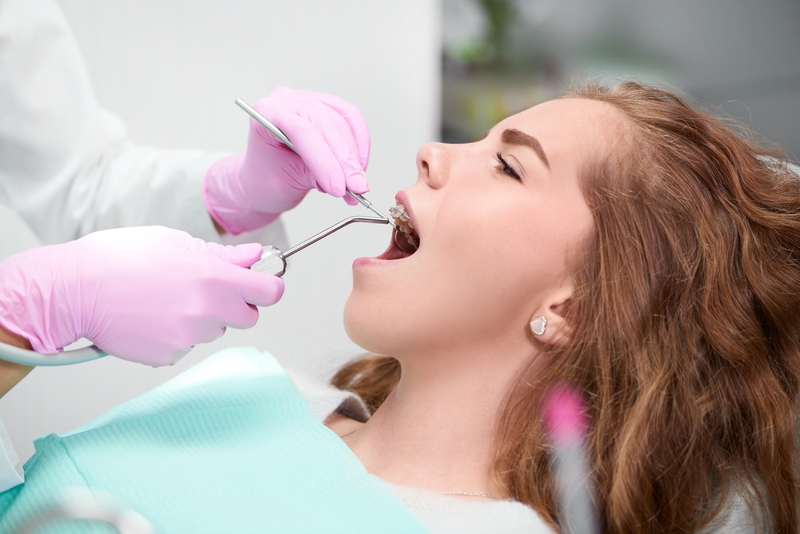
More than half the people that wear braces are children and teens. This can be an exciting time for kids to fix bite problems and crooked teeth. However, tooth decay and oral health problems also run rampant during braces if oral hygiene guidelines aren’t followed. Sometimes children and teens need a nudge to help them with their oral health. Find out what they should be doing to care for their braces during this time!
Facts About Braces
Did you know that there are over 4 million people in the United States each year that wear braces? About 1/4th of those are adults and the rest are children and teens. Patients use braces as teens to straighten the adult, permanent teeth that have come in. When children have child orthodontics, those brackets and wires are meant to correct bite and alignment issues that could cause a child severe problems in the future. Children can then straighten their permanent teeth later on.
There are common oral health problems that many children face today. It’s called tooth decay, and the National Institutes of Health reports that it’s the most “prevalent, chronic disease” among children and adults. 42% of children will have tooth decay before they are 12. 23% of those will have untreated dental decay. About 92% of adults have had tooth decay sometime in their life. The worst part about this is that tooth decay is completely preventable if a child, teen or adult has good oral health through practicing proper oral hygiene.
It may take several years for a child to have the right dexterity in their hands to brush and floss correctly. That is why parents must take care of their child’s oral health when they are young, or it could lead to serious problems. Children rely on parents to help their mouth stay healthy. Even teens need to be told to brush and floss, as it’s something they often forget. These habits are especially important during braces, as oral health is most affected when there are brackets and wires on the teeth.

Helping Your Child’s Oral Health
The American Academy of Pediatrics recommends that children see a dentist around 1 year or within 6 months of their first tooth coming in. After that, they should go biannually to the dentist. This is how a dentist can start to see signs of bite and alignment problems, which are then referred to an orthodontist.
With some orthodontic appointments, a child can be fitted for braces to correct problems that are easy to fix with a young, moldable jaw, but hard to fix when a person is older and their jaws are set. Without braces, you will have to help your child brush and floss their teeth at least twice a day as the American Dental Association recommends. Use child toothpaste enhanced with decay-fighting fluoride and a toothbrush that fits the size of your child’s mouth.
Children will need to floss between their teeth, but might have to start out with flossers for kids. With braces, children should be brushing at least twice a day, but after every meal is even better. They should brush at 45-degree angles, making sure to move in all different directions to dislodge food that has been stuck in the braces. Flossing is incredibly important as well, as it gets 40% of tooth surfaces that are missed if flossing is skipped. Help them learn how to use threadable floss. This gets poked through the spaces between their teeth, pulled through, and flossed like you would normally do. Use a Christmas tree brush or a waterpik to help them dislodge stuck food.
Do You Have Good Habits?
One of the best ways to help your child with their oral health is to show them its importance through your own actions. If you don’t brush and floss your teeth, your child or teen may not either. When you’re also not visiting the dentist, odds are that your child isn’t either. If you eat a poor diet full of sugar, then your child will do the same. Children often copy what their parents do.
Make sure you are brushing your teeth at least twice a day, especially when your children can see you. Floss your teeth and teach them how to floss properly as well. When you need to go to the dentist, take your children with you and have them get their comprehensive exams and cleanings. All these oral health measures will ensure their mouths stay clean and healthy for years!
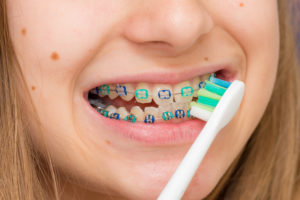
Other Factors to Consider
Your child can brush and floss their teeth often and may still end up with cavities. Cavities come from plaque in the mouth that has set on the teeth for too long. Your mouth makes plaque when you eat sugary foods and that sugar mixes with mouth bacteria to make acidic plaque. That acid is what causes the tooth decay. However, if you limit your sugar intake to begin with, you won’t have the problem with tooth decay.
Unfortunately, sugar is one of the most-consumed substances in the world. It is literally found in almost every food. That is why tooth decay is so common, especially in children. Limit your child’s sugar intake if you want them to have healthy teeth when their braces come off. Teeth that don’t get brushed or flossed often with braces, may end up having cavities, gum disease and eroded areas of their teeth when braces come off.
Their food can also leave them with squares on their teeth from the brackets, because the surrounding tooth has been damaged by food. Make sure to consider what your child is putting in their mouth if you want to help them have good oral health! For more tips or answers to questions about your child’s braces, call Belmar Orthodontics today at (303) 225-9016!
Tips for Success and Happiness with Your Braces
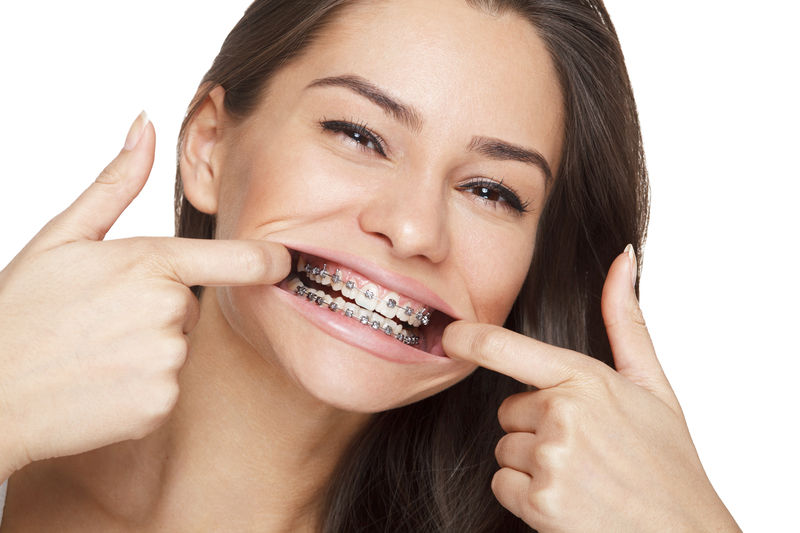
Many adults and teens feel like they will look childish with braces on. However, that still doesn’t stop more than 4 million people wearing braces each year in the U.S. Yes, braces are harder to clean and require more care. However, that care only takes a few extra minutes each day, and you have orthodontic options that can make you extremely happy with your braces. Find out how you benefit from orthodontics!
Your First Week with Braces
When you first get brackets and wires on your teeth, you will have tooth sensitivity for a few days. That sensitivity and soreness will wear off, but during that time, stick to soft foods such as pasta, yogurt, mashed potatoes, etc. Over-the-counter painkillers (like acetaminophen) can help curb pain that first week and at each braces adjustment.
Your braces will feel bulky in your mouth at first, but will quickly start to feel normal. Even though there are changes with braces, you can be successful with your treatment if you do everything the orthodontist tells you. This includes using your bands like they tell you, having good oral health and avoiding foods that can cause you trouble.
There are foods you want to avoid that will either break your brackets or wires or that will become stuck in them. Many foods on this list are also full of sugar, which is what makes plaque that coats your teeth. When plaque sits on the teeth, it decays them and erodes them. Avoid foods like:
- Hard candies
- Chewing on ice
- Apples, carrots, and hard fruits and veggies
- Popcorn (because of kernels), nuts and chunky peanut butter
- Chips and hard snacks
- Caramels, licorice, taffy, Tootsie Rolls, Starbursts, Sugar Daddies, Skittles and similar candies
- Corn on the cob
- Dried fruit, fruit snacks and gummies (which get stuck in brackets and teeth)
- Gum

Taking Care of Your Teeth
Caring for your teeth through proper oral hygiene is essential if you want to love your braces and if you want your teeth to be in good shape when they come off. Patients who skip brushing and flossing will end up with tooth decay, tooth erosion (worn away areas of the teeth) and stains on their teeth when the braces come off. Don’t let that be you! Follow these tips for taking care of your braces successfully:
- Brush, brush, brush! Aim for three times a day instead of just the recommended two times. The American Dental Association recommends that patients brush for at least 2 minutes every time, at least morning and night. Choose a soft-bristled toothbrush that will be more gentle on your teeth and switch out your brush every 3 months.
- Floss your teeth. Flossing is the thing that is most often skipped, especially by children and teens. However, flossing gets about 40% of your tooth surfaces that brushing misses. It is one of the only ways to dislodge stuck food that will decay your teeth. Floss 1-2 times a day. However, invest in flossers or threadable floss, which you can pull through the cracks in your teeth, getting under the wires. This makes flossing so much easier.
- Use a Waterpik and brush. Patients often get food stuck in their teeth that flossing and brushing can’t get out. A waterpik is a small device that shoots water. You shoot the water where you want to dislodge the food or particles in brackets or in between the teeth. A braces brush looks like a tiny Christmas tree. It can get all the gunk out of your brackets and wires with ease.
- Don’t chew on non-food items! Pencils, fingernails, and any other hard item can break your braces.
Benefits that Braces Can Give You
Some patients love their braces, while others don’t. If you are the latter, just remember why you are getting braces: you are looking forward to that beautiful, straight smile. You only have braces on for 1-2 years. If you get through that time, you get to have a straight, beautiful smile for life. Studies show that your smile goes a long way as well. It’s one of the first things others notice about you. In studies done about straight teeth vs. crooked teeth, the impressions others got were quite impressive:
- Invisalign (Align Technology) found that people with straight teeth were 45% more likely to be hired for a job.
- They were seen as 58% more likely to be wealthy and successful.
- People perceived people with straight teeth as healthier, happier, and even smarter than others.
- A whopping 73% of people were more likely to trust someone with straight teeth as well!
Whether you love your braces or not, just remember the amazing benefits that come from having a straight smile. It will not only improve your social life, but straighter teeth are easier to clean and less prone to tooth decay and oral health diseases as well.

Being Happy with Your Braces
The best way to be happy about your braces is to choose braces that you love. Some patients prefer metal braces because they are the most economical choice, while others like Invisalign because they are removable. Patients also enjoy clear, ceramic braces that are like traditional braces, but made from white, ceramic material. If you want the sturdiness of metal braces, but want them hidden like Invisalign, you can also choose our lingual braces option.
These are braces hidden behind the teeth. If you are self-conscious about your appearance and want to straighten your smile quickly, this may be the option you want. No matter what you choose, remember that this is your only time with braces! Enjoy going through this journey and even get your braces at the same time as your friends to make it more fun. For tips about adjustments, appointments and any extra tips for your braces, call Belmar Orthodontics today at (303) 225-9016!
How Do Lingual Braces Compare with Other Options?

Deciding to get braces is a an excellent decision that will not only improve your oral health and your smile, but your confidence as well. There are countless benefits to straightening your teeth. However, the first step is choosing a braces option that is right for you. Do you want the strongest braces you can get? Is there a bite problem that you need to correct? Do you want to hide your braces as much as possible? Your goals and lifestyle will determine what braces option is right for you. Learn how the popular lingual braces compare with other options!
Lingual Braces 101
Back in the day, there was only one option for straightening your teeth: metal braces. Many people have these bracket-and-wires option that is attached to the front of your teeth. In fact, it is still one of the most popular braces options today. This is partly because traditional metal braces are one of the only options that children can use to correct bite and alignment issues. However, over the years, it became more important to provide an orthodontic option that can still correct bite and alignment issues, but in adults. The main kicker was that many teens and adult shy away from braces because they don’t like the metal showing on their teeth.
That is why lingual braces were created. Using the same idea as traditional metal braces, you can achieve the same results as traditional braces, only with a hidden treatment apparatus on the tongue-side of your teeth. Patients that choose this option have impressions made of their mouth that focus on the backs of their teeth. After being sent to a special lab, metal backings for the teeth are made that are then bonded to the back of your teeth. These also have small metal brackets and wires that discreetly correct bite and alignment issues over time.
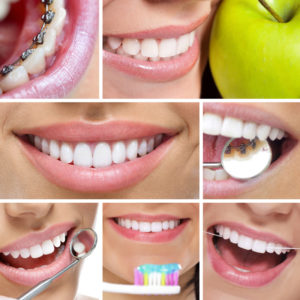
Traditional Braces Vs. Lingual Braces
There are not many differences between lingual braces except for the following:
- Lingual braces are custom-made specifically for a patient. Traditional braces are always the same brackets and wires that are used for all patients. Lingual braces have to be fit to a person’s individual teeth.
- The braces are hidden with the lingual option. Brackets, wires and all metal is attached to the back of the teeth instead of the front. You can go your entire treatment without anyone knowing you have braces.
- This option is ideal for musicians. Brackets and wires on the front of the teeth can interfere with wind instruments in some people. When the brackets and wires are on the tongue-side of the teeth, you don’t get those problems.
- Athletes also benefit because there are no brackets or wires that can shred the cheeks if an injury happens in contact sports.
- You straighten your teeth while keeping your smile bright and beautiful with lingual braces.
We love traditional metal braces, lingual braces and all our other orthodontic options. It generally comes down to aesthetics with most patients, and that’s where lingual braces has traditional metal ones beat. The comparison between ceramic braces and lingual braces is almost exactly the same, as ceramic braces are modeled after traditional metal braces. The only difference is that they are made of white ceramic material instead of metal material.
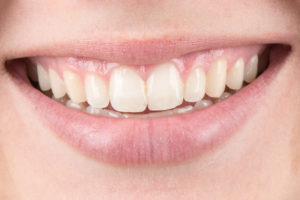
Why Lingual Braces Over Invisalign?
There are many patients that wonder why they shouldn’t simply get Invisalign. These transparent aligners are offered at our office, and they do excellent work to straighten the teeth. We actually recommend these to many teens and adults. However, they do have their limitations, which is why we recommend lingual braces over Invisalign in some cases. Invisalign treatment works to straighten a patient’s mouth in secret. Lingual braces seek to achieve this same incredible benefit. However, only lingual braces can correct bite and alignment problems that are severe.
The metal-and-bracket design makes them incredibly sturdy for drawing a bite in if a person has overbite. It can also do the opposite and correct underbite and other other type of bite problem. However, Invisalign aligners have a much harder time with that because they don’t have brackets and wires. Both options are great if a patient simply wants to straighten their teeth. Both options are also very hidden in the mouth, making them appealing to teens and especially adults. However, when bite problems exist, you want to kill two birds with one stone by straightening and correcting bite. If this is you, then opt for lingual braces instead of Invisalign.
Choosing Your Braces
We take choosing specific braces on a case-by-case basis. There are four amazing braces options available for patients to choose from, and each were designed to target different things that patients need. Patients want the sturdiness of metal braces, but don’t always want them visible. That is why lingual braces are a great hybrid of the other types of braces we offer. You get the functionality and strength of metal, but the hidden feature like Invisalign provides. We want every patient to be sure about their braces option before they have their orthodontic appliance made. To find out which option will suit you best, call Belmar Orthodontics today at (303) 225-9016!
Get Your Braces in Time for Back-to-School

Going back to school can be an exciting time whether you’re a child, teen or an adult. However, if you have recently had your braces put on or plan to get them before school starts, there are some things you should prepare for. Those include planning ahead so that you can clean your teeth at school, that you have food you can eat with braces and more. As you go back to school this year, use these tips for taking care of your braces and for showing them off to your peers!
Should You Get Braces?
Many people see braces and try to decide if they are right for them. Receiving orthodontic care does take time, but it’s time well spent. Most patients are generally wearing their orthodontic appliance for 18-24 months at a time. However, you can achieve a straight smile that will last you the rest of your life.
There are incredible benefits that come with getting braces, and we’re not just talking about getting straighter teeth. Braces can correct a patient’s problems with bite and alignment. These types of problems can create speech impediments over time and can make it difficult for patients to bite, chew, smile and more. Add crooked teeth on top of that, and the teeth also become much more difficult to clean. When they are more difficult to clean, patients generally miss cleaning areas that eventually decay. Without orthodontic treatment, you raise your risk for tooth decay and gum disease, as well as dental emergencies. Crooked teeth and bite problems can lead to broken and cracked teeth over time.
However, braces can get rid of all those risk factors that lead to chronic dental problems. And you don’t really have to do much except keep your braces clean! Studies also show that people who straighten their teeth tend to smile more, and they actually have a major confidence boost that stays with them. Going back-to-school is a great time to get that extra confident boost!

Choosing Which Braces You Want
In the past, patients only had one dental option. Today, you have at least four options. At your consultation, you can learn about and choose from these options:
- Traditional Metal Braces: The metal brackets and wires many people think of when they think “braces”. The metal brackets attach to the front of every tooth and are held in place by a metal wire that goes along the bottom and top teeth. The molars have metal bands that go all the way around the tooth in the back to keep the braces very sturdy.
- Ceramic Braces: These are designed just like traditional metal braces, but they are made from white, ceramic material to blend with the teeth. Even the wire can be made white for patients.
- Lingual Braces: With Incognito Lingual Braces, you can achieve the same results as traditional braces with a hidden treatment apparatus on the tongue-side of your teeth. These braces consist of metal that is custom-molded to fit on the back of all your teeth. The metal covers the entire back instead of simply consisting of a bracket. However, there is still a small bracket that holds the metal wire in place. The main advantage of lingual braces is that they can straighten and correct bite problems without being seen.
- Invisalign: This treatment consists of transparent aligners custom-made for a patient’s teeth that they switch out every week. Over time, crooked teeth become straight. The aligners can be removed for any activity (eating, brushing, sports), however, they can’t correct major bite issues.

Watch What You Eat
With any new thing, there is always a learning curve. Braces are no different. For the first few days, your mouth will have to adjust to having an orthodontic appliance attached to the teeth. The newness of your braces will fade, but the need to take care of them won’t fade. One of the main things you need to watch out for with braces is what you eat. Many students get lunch from the cafeteria, snack bars, or fast food places. If this is you, be careful what you eat and aim to avoid foods such as:
- Hard candies: These generally contain lots of sugar and chewing on them can break brackets and wires.
- Avoid hard foods such as nuts, chips, popcorn (because of kernels), apples, crusty bread, carrots or hard vegetables.
- Ice: Never chew ice, as this can break orthodontic appliances and can crack or break a tooth. Always suck on ice; never chew.
- Sticky Sugary Foods. These include caramels, taffy, licorice, Tootsie Rolls, Starburst, Sugar Daddies, Skittles and candies that are similar.
- Gum: This gets stuck in all your orthodontic appliances and most are sugary, meaning that stuck food will be able to sit on your teeth and eat away at your tooth enamel.
Nobody wants to get back-to-school and have a dental emergency happen. If you always watch what you eat, you don’t have to worry about dental emergencies and serious oral health issues.
Get Your Braces in Time for Back-to-School
Do you want to make an amazing transformation this year? Start with your smile! Your smile is one of the first things others notice. You want to make that smile shine. For the perfect smile you are envisioning, we can help make it a reality! Simply call Belmar Orthodontics today at (303) 225-9016 for your free consultation!
What are the Benefits of Lingual Braces?
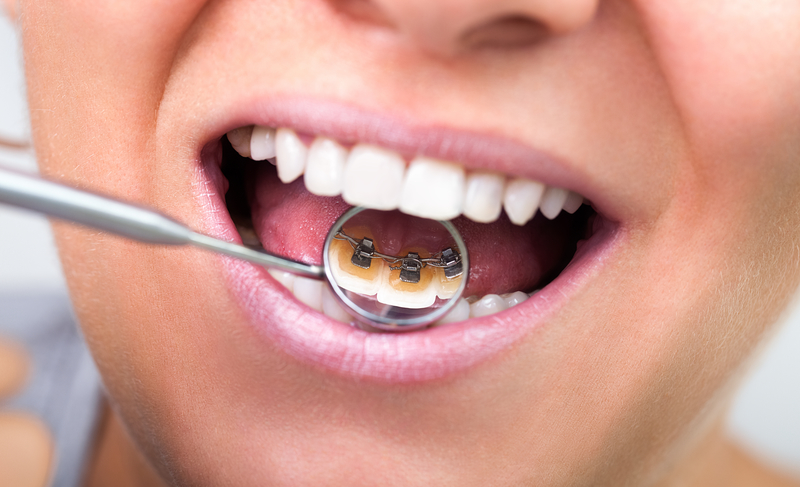
Many patients are getting excited about lingual braces as an option for their orthodontic care. These types of braces can correct long-term or lifetime dental issues. They are also hidden in a patient’s mouth and because they’re not on the front of the teeth, they are a perfect option for athletes or musicians to perform better. Thinking about leveraging the power of lingual braces to straighten your smile? Consider the benefits that lingual braces can offer you and ask about your set today!
What’s the Difference Compared to Other Options?
Lingual braces is an exciting option for patients who want to combine the benefits of Invisalign transparent aligners with the sturdiness of traditional metal braces. These type of braces are also known as “incognito hidden braces” because they rest behind your teeth instead of on the front. They too, are made from metal, except this metal is usually gold instead of silver. Plus, instead of simple brackets and wires, the metal attachments cover the entire back of your tooth surface.
There are brackets and wires, but they are on the tongue-side of your teeth. Lingual braces are amazing because they can achieve the same results as traditional orthodontics in a manner that is inconspicuous and undetectable. They are tightened at each appointment just like traditional braces and can correct bite and alignment issues with ease. How do you benefit from these type of braces?
- Correction of long-term or lifetime dental issues
- Less noticeable orthodontic treatment
- Good orthodontic treatment for athletes and musicians who play wind instruments
- Increased confidence during treatment compared to traditional methods
- Elevated self-esteem after treatment
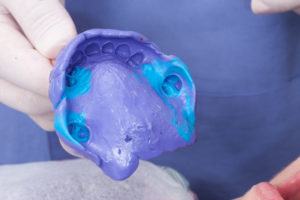
Difference Between Lingual and Traditional Braces
Not all metal braces are alike. Even though lingual braces are made out of metal alloys, they are still different than traditional metal braces. Metal braces rest front and center on a patient’s teeth. They consist of the classic brackets-and-wires set-up, but they can make your smile look gray because of the metal. Depending on your oral health, you can have tooth staining and dental erosion during your time with braces. This can leave marks when the braces come off.
Compared to traditional braces, lingual braces are more ideal for athletes and musicians. Traditional braces can make it difficult for musicians to play wind instruments and can affect how a person blows. For athletes, they have to worry about dental emergencies caused by metal brackets and wires if they get hit in the mouth. There are no brackets or wires on the front of the teeth that will cut up the cheeks if a person gets hit in the face. However, both of these styles of braces are extremely effective at correcting bite and alignment issues.
Comparing Lingual Braces to Ceramic Braces
Ceramic braces are very similar in their style to metal braces. The only difference is that they are made from white, ceramic material instead of metal. Even the wires can be made white to match the teeth. This is a more aesthetic option for teens who like metal braces but don’t want them as noticeable. However, they are still much more noticeable than hidden braces would be. A teen or adult simply has to decide how noticeable they want their braces.
Invisalign Vs. Lingual Braces
If patients want hidden braces, then why not just use Invisalign treatment? This is a great orthodontic option, but it has its limitations. Yes, Invisalign is transparent on the teeth. However, those aligners cannot correct many bite and alignment issues, which many patients need. They are more ideal for patients who only need their smile a bit straighter. For any major orthodontic issue and especially bite problems, Invisalign is not the best option. Lingual braces combine the hidden aspect of Invisalign treatment, but with the sturdy structure of metal braces that can correct bite problems.
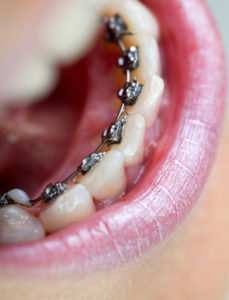
Choose Orthodontic Care
No matter what orthodontic option you choose, simply opting to receive orthodontic care for bite and alignment issues will improve your oral health immensely. Some people skip receiving orthodontic care because they believe they will save all that money. However, crooked teeth and bite issues can actually cost more money in the long run. How you ask? When your teeth are straight, they are very simple to clean with a toothbrush and quick to floss. However, when they are crooked, you will consistently miss many parts of your tooth surfaces. This can lead to quick decay, which will take dental work for every instance of tooth decay.
Flossing also gets very difficult when the teeth are crowded or crooked. A patient may not even be able to pass floss between the teeth if they are too crooked. That’s detrimental to a patient’s health, as 40% of tooth surfaces can only be reached through flossing. That leaves those tooth surfaces open to decay, enamel erosion, staining and infection. If this happens all over your mouth, you’re looking at spending a lot of money over a lifetime to fix all your oral health problems.
Get Your Braces
Opting to receive orthodontic care saves you the headache of bite and alignment issues, crooked teeth, and decay and gum disease that can happen. Correct these issues early-on and enjoy your smile for life. Call Belmar Orthodontics today at (303) 225-9016 to learn about lingual braces and your other orthodontic options!

